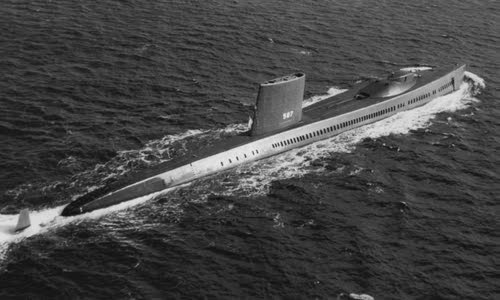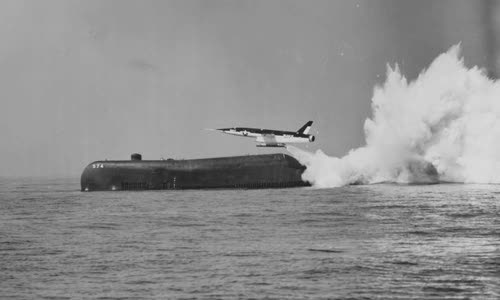The United States planned to develop an AN-1 that could launch fighters in the 1950s, but canceled it to focus on supercarriers.
The Soviet Union tested its first nuclear weapon on August 29, 1949, breaking the US atomic monopoly, forcing Washington to change its military strategy around the world.

The USS Halibut submarine sailed over the Pacific in 1968 Photo: US Navy
With more than 300,000 tactical aircraft and the world's most modern bomber force after World War II, the US believes that the next war between the superpowers will take place mainly in the sky.
At the time, the United States was experimenting with the idea of launching a full-size submarine missile, part of the process of building a strategic nuclear deterrence trio.
The US Navy began to conceptualize an AN-1 carrier-based hybrid submarine based on the design of the USS Halibut.
The AN-1 is a large submarine, about 152 meters long, 13 meters wide, has a diving speed of nearly 30 km / h and has an unlimited range thanks to its nuclear-powered engine.
The real power of the AN-1 is eight fighters designed by Boeing, housed in two brothels in the hull.

The Regulus II missile was launched from a submarine in the Pacific in 1958 Photo: US Navy
The boosters will be detached from the fighter after launch and recovered for reuse.
Experts believe that the AN-1 is a useful weapon in large-scale conflict, because they can hide in the seabed, silently close to Soviet or Chinese territory to launch a fighter equipped with weapons.
However, the military landscape changed rapidly in the following years with the advent of intercontinental ballistic missiles and submarine-launched ballistic missiles.
These factors prompted the United States to cancel the AN-1 project when it was new in the design phase to focus on investing heavily in more powerful and flexible supercarriers.



 Tami Johnston-Cook
Tami Johnston-Cook







